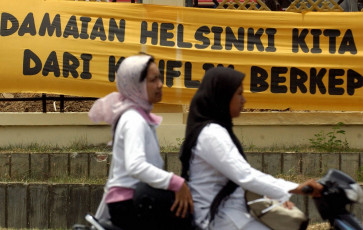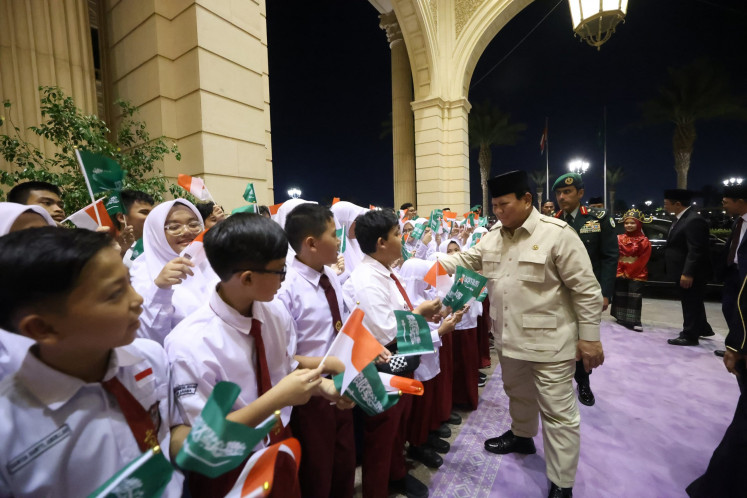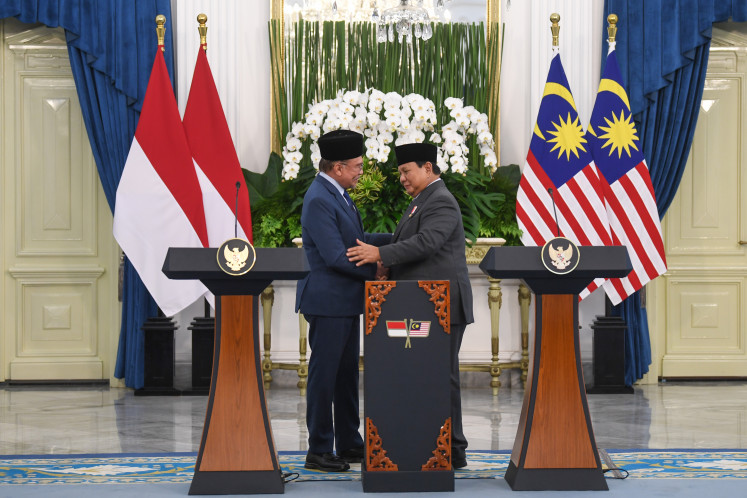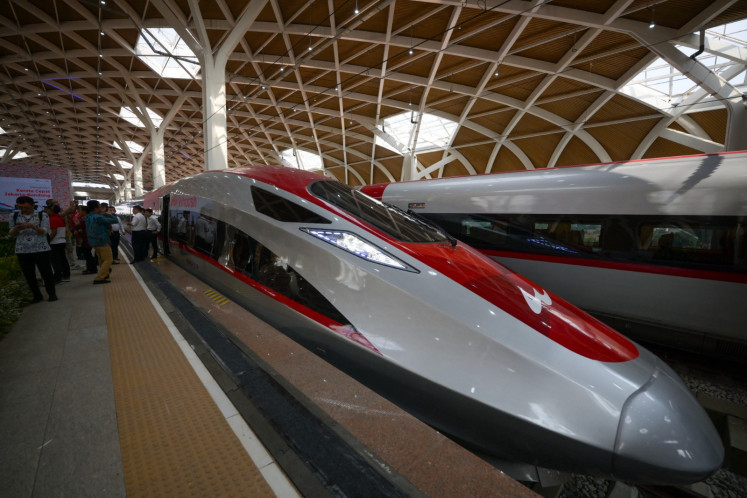Popular Reads
Top Results
Can't find what you're looking for?
View all search resultsPopular Reads
Top Results
Can't find what you're looking for?
View all search resultsCassava-inspired batik motif from Bondowoso
Cassava, typically a popular ingredient for a signature snack from the East Javanese town of Bondowoso, begs to differ â inspiring an exclusive batik motif
Change text size
Gift Premium Articles
to Anyone

Cassava, typically a popular ingredient for a signature snack from the East Javanese town of Bondowoso, begs to differ ' inspiring an exclusive batik motif.
In Maesan district, located some 12 kilometers from Bondowoso city center, Sumbersari Batik producer, established in 1985 by the late batik lover Lilik Soewondo, has made the cassava leaf its main design motif.
'My late aunt [Lilik] named her business Sumbersari Batik because she lived in Sumbersari village,' said Yuke Yuliantaries, Lilik's nephew.
He said that Lilik chose cassava as the main motif for her batik because she wanted to display the identity of Bondowoso, renowned across the archipelago for its signature sweet tape, a snack made from fermented cassava.
Yuke said that through the cassava motif, Lilik wanted to make her batik different from other batik, especially those from prominent batik cities, such as Yogyakarta and Pekalongan in Central Java.
Lilik, he said, also used bright colors to distinguish her batik from competitors' batik, which were mostly dominated by neutral colors like black and brown.
Apart from using the cassava motif and bright colors, Maesan-made batik typically had a story within the designs, just like those found in paintings, said Yuke, when showing a batik shirt that displays two big phoenix birds and uses the cassava motif in other sections.
'During the World Cup, we produced batik fabrics and shirts that told football stories that we also accentuated with cassava motifs,' said Yuke, who has taken over Sumbersari Batik since 2001.
He said that his batik had been ordered by customers from other countries, such as China, Finland, France, Germany, Japan, Singapore, the Netherlands and the United States.
Yuke said the main challenge was to boost his production capacity with rising demands, both from domestic and international markets.
In a month, he can only produce 200 to 500 batik pieces, while demand usually exceeds 500 per month.
His staff, he said, was mostly housewives living near the batik factory. They work from 9 a.m. to 3 p.m., which allows them to take care of their families while at the same time earning enough money to support themselves.
When the company first opened, it employed 10 people. Currently, it has 50 staff.
He said he was trying to expand his business by not only producing batik shirts and fabrics but also batik blouses, dresses, bags, neckties and mukena, female scarves for praying.
'As of today, 80 percent of our production is dedicated to batik fabric,' Yuke says.
He said that under his management, Sumbersari Batik created a unique design for each product to provide exclusivity for their customers.
'Our principle is 'one design, one product'. Here [at Sumbersari Batik] our customers will never see another person wearing the same design,' Yuke says.
He said that his brother, architect Ifriko Desriandi, made batik motifs and the staff continued with the rest of the process. Previously, from 1985 to the 1990s, the motifs were created by his father, painter Didik Astiawan.
'Another principle that I stick to is that [Sumbersari Batik] will only produce handmade batik,' Yuke said.
He said that like Lilik, he was never interested in producing printed batik because he believed that such 'batik' could never be classified as true batik even though it looked similar to authentic handmade batik.
He insisted that as an art form, batik should not be made by machines ' only by the traditional method of using canting wax pens to draw the pattern on the mori fabrics.
It may be located in a small town but Sumbersari targets people from middle to upper classes, with the cheapest batik fabric being priced at Rp 600,000 apiece. Yuke declined to disclose the highest price of his batik.
'Batik is an art. It deserves to be handsomely rewarded,' he says.
' Photos by A. Kurniawan Ulung









